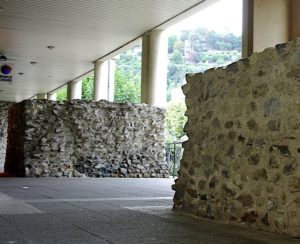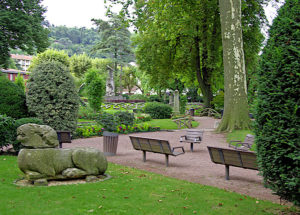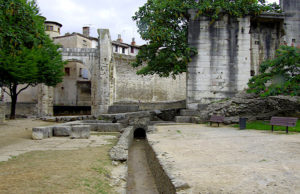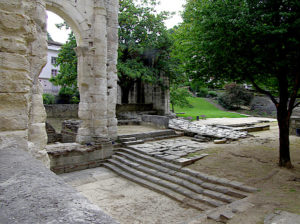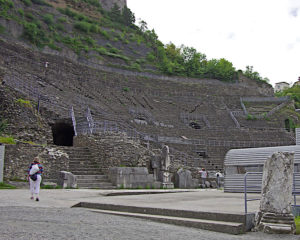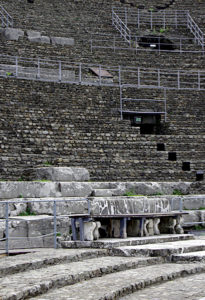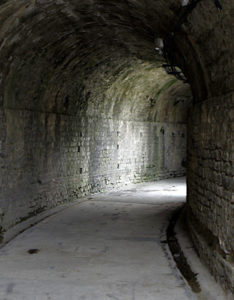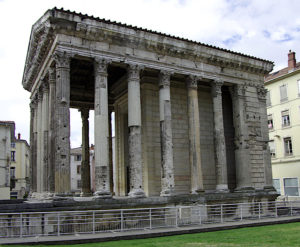The Rhône was an important routeway in Roman times and Vienne was a day’s march south of Lyon. It was an important Roman city and one of the first Bishoprics. The Emperor Augustus authorised the construction of a 7km wall around the city although this was more for show than defence. Part of it can still be seen on Cours Brillier.
I spent a morning with a map wandering round Vienne and exploring the amazing collection of Rioaman remains which have survived. Many of them have a short information board.
Just outside the wall at Cours Brillier, are the gardens on Place des Allobroges. These are attractive gardens with flowers, grass and trees with pieces of Roman statuary scattered about. These were laid out on the route of a Roman road and a section was left exposed when the gardens were made.
A short walk away are the Gardens of Cybèle, which include the foundations of a senator’s villa and part of the forum along with other Gallo-Roman remains which were found when a Medieval hospital on the site was demolished in the C20th. Like the gardens Place des Allobroges, these are freely accessible and have seats to sit and enjoy the surroundings.
Set into the hillside above is the remains of the theatre (small charge to enter). This was built around 40AD and is one of the largest in the Roman Empire, seating over 11,000 spectators in tiers of seats stretching up the hillside. It is a large semi-circular structure around the central stage. The four lowest rows were reserved for important dignitaries and the seats were made of marble. Staircases and vaulted corridors gave access to the different tiers.
The theatre fell out of use in the C4th and it was used as an open quarry for later buildings and also for dumping rubbish. It was restored in the C20th and is now used for concerts and festivals in the summer months.
The Temple of Augustus and Livia on Place du Palais Charles de Gaulle, dates from 20-10BC and was originally dedicated to the Emperor Augustus and his wife Livia. It is one of the best examples of a Roman temple to survive, with its three sides of open columns as it was converted into a Christian Church in the C5th. This is one to admire from teh outside as there is no entry into it.
Finally, don’t miss the eclectic collection of Roman masonry in “Old St Peter’s Church.”:https://www.silvertraveladvisor.com/travel-product/attraction/205332-the-old-church-of-st-peter-and-the-archaeological-museum
This was Day 4 of Burgundy, the River Rhone and Provence, a river cruise with Riviera Travel.
My full account with all the pictures can be found “here.”:https://www.silvertraveladvisor.com/travel-product/attraction/205332-the-old-church-of-st-peter-and-the-archaeological-museum
